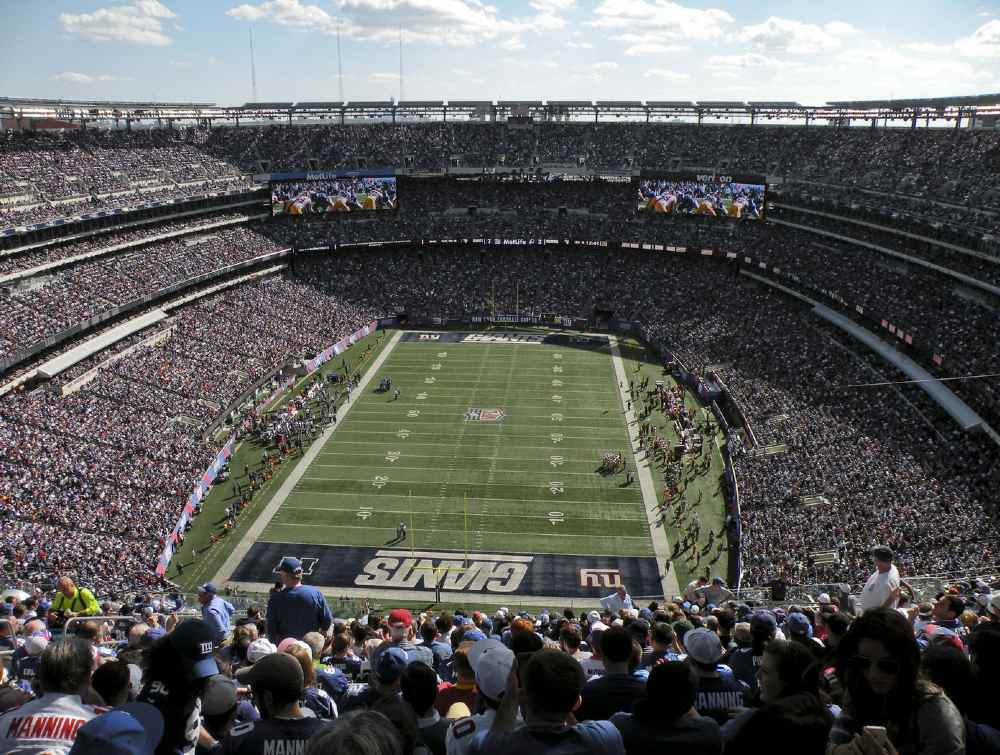WC 2026: Infantino shocked by… summer? Heatwave exposes FIFA unprepared
source: StadiumDB.com; author: Paulina Skóra
 FIFA president Gianni Infantino announced that during the 2026 World Cup, to counter expected heat, matches scheduled for early hours will be played primarily in stadiums that are covered and air-conditioned.
FIFA president Gianni Infantino announced that during the 2026 World Cup, to counter expected heat, matches scheduled for early hours will be played primarily in stadiums that are covered and air-conditioned.
Advertisement
Learning from the Club World Cup
Concerns about player safety due to high temperatures arose during the ongoing Club World Cup in the USA — the country that, together with Canada and Mexico, will host next year's World Cup. The final took place at MetLife Stadium in New Jersey with temperatures around 28°C, which felt like over 32°C due to humidity. Chelsea midfielder Enzo Fernández admitted after the match: Honestly, the heat was incredible. During one play I felt weak and had to lie down on the pitch. Playing in these conditions is very dangerous.
Heat is undoubtedly a serious global problem. I remember similar challenges during the Paris Olympics and many other matches. Fortunately, we have covered stadiums in America, including one in Vancouver, Canada, and we will definitely use them more during the day,
added Infantino.
Before the tournament began, the FIFPRO players’ union gave FIFA recommendations on protecting player health, such as moving match start times, extending halftime breaks from 15 to 20 minutes, and introducing cooling breaks every 15 minutes. Despite these, FIFA decided on only one cooling break per half, usually around the 30th minute, which drew criticism from the football community.
 © Matthew D. Britt (cc: by-nc-sa) | MetLife Stadium
© Matthew D. Britt (cc: by-nc-sa) | MetLife Stadium
The tournament was also disrupted by bad weather — several matches on the US east coast were delayed due to storms. The Chelsea vs. Benfica round of 16 match delay by two hours was heavily criticized. Chelsea coach Enzo Maresca expressed frustration: This is a joke. This is not football. You can’t sit inside for so long. I understand safety concerns, but if you suspend 7–8 matches because of storms, maybe this isn’t the right place for such a tournament.
Covered stadiums to host more matches?
Due to growing heat concerns, FIFA’s president announced that at the 2026 World Cup more emphasis will be placed on using covered stadiums, especially those in Dallas (AT&T Stadium), Houston (NRG Stadium), Atlanta (Mercedes-Benz Stadium), and Vancouver (BC Place). These venues, equipped with air conditioning and roofs, are expected to be preferred for daytime matches. SoFi Stadium in Los Angeles, with a semi-transparent roof but no air conditioning, is also included.
Some other 2026 World Cup stadiums have partial roofing over stands. For example, Lumen Field’s roof covers about 70% of the audience but does not protect the pitch. Early plans for full roofing at the Seattle stadium were abandoned mainly due to financial reasons.
Did FIFA make a mistake?
With less than a year to go before the World Cup kicks off, one has to wonder — did it really take the Club World Cup for FIFA officials to realize that the summer heat could be unfavorable for both players and fans? Some sources suggest there may be changes to the list of host stadiums, but such reports should be approached with caution.
After all, several stadiums that were withdrawn or rejected during the 2026 World Cup host city selection process are equipped with either fixed or retractable roofs, such as U.S. Bank Stadium in Minneapolis (fixed roof, capacity 66,655 expandable to 73,000), Ford Field in Detroit (domed, 65,000 expandable to 70,000), State Farm Stadium in Glendale, Arizona (retractable roof, around 63,400 expandable to 78,600), and the modern Allegiant Stadium in Las Vegas with a transparent ETFE air-conditioned roof and capacity of about 72,000.
What about Mexico?
Mexican stadiums will also play an important role in the 2026 World Cup, but climate and roofing conditions differ from the USA and Canada. Mexico has three stadiums: Estadio Banorte in Mexico City, Estadio Akron in Guadalajara, and Estadio BBVA in Monterrey. None have full roofing — only partial roofing over stands that protect spectators from sun and rain, while pitches remain uncovered.
June and July temperatures vary by location. Mexico City, at about 2200m altitude, has moderate temperatures ranging from 20 to 27°C, reducing extreme heat risk. Guadalajara and Monterrey, at lower altitudes, can reach 32–35°C, posing greater challenges for players and fans. Therefore, in Mexican cities, scheduling matches at cooler times and introducing cooling breaks will be important to ensure comfort and safety.
Advertisement

 StadiumDB
StadiumDB